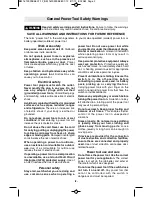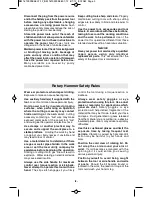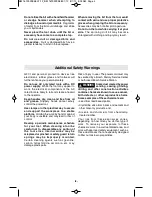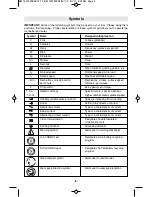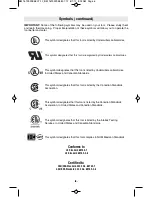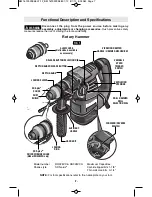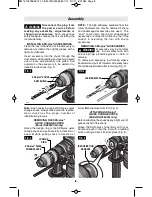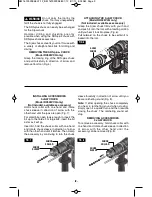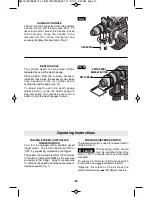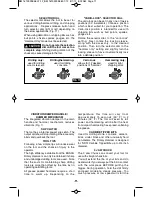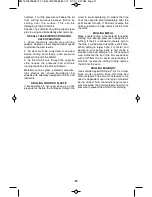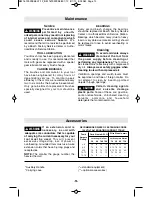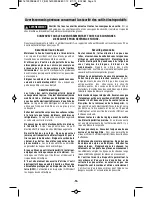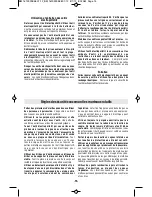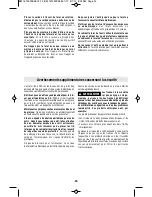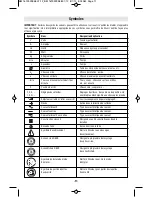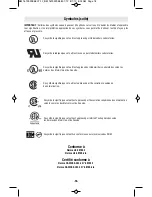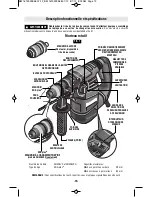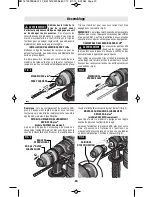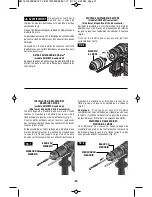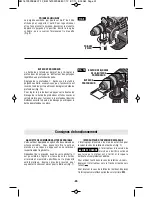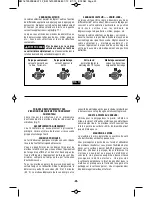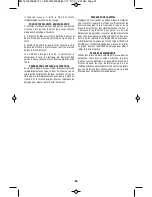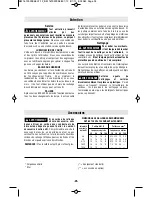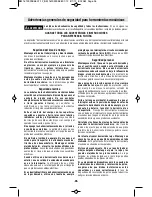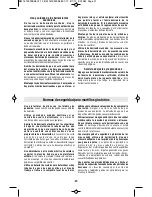
-12-
hammer. Too little pressure will keep the bit
from cutting and cause excess friction by
sliding over the surface. This can be
damaging to the drill and bit.
Shanks of all drill bits should be wiped clean
prior to using and immediately after removing.
RECALL THESE INSTRUCTIONS FOR
SAFE OPERATION:
1. Some materials require slow drilling
speeds; whereas, others require higher speed
to produce the best results.
2. All work must be supported or secured
before drilling and steady, even pressure
applied in line with the drill bit.
3. As the drill bit cuts through the opposite
side, reduce the pressure and continue
running the drill as the bit is withdrawn.
Materials such as glass, porcelain, ceramics,
tiles, plastics, etc., should be drilled at low
speeds with specially designed drill bits and
lubricants.
DRILLING WOOD OR PLASTIC
If backing block is not used, ease up on the
pressure just before the bit breaks through the
wood to avoid splintering. Complete the hole
from the opposite side immediately after the
point breaks through. If bit binds, reverse the
drilling operation to help remove the bit from
the work.
DRILLING METAL
Make a center punch in the material for easier
starting. Use enough pressure to keep the bit
cutting. If the bit is allowed to merely spin in
the hole, it will become dull within a short time.
When drilling a larger hole, it is faster and
easier on your power pack to first make a
smaller hole and enlarge it to the required
size. Lubricate the tip of the bit occasionally
with CUTTING OIL for easier metal drilling. If
bit binds, reverse the drilling to help remove
the bit from the work.
DRILLING MASONRy
Use carbide-tipped SDS-plus
®
bit for cinder
block, mortar, common brick, soft stone and
other materials. The amount of pressure to be
used is dependent upon the type of material
being drilled. Soft materials require less
pressure while the hard materials need more
pressure to prevent the drill bit from spinning.
BM 1619929E58 07-12_BM 1619929E58 07-12 8/1/12 8:02 AM Page 12


